Ancient methods
To create his art, Nathanaël Le Berre uses traditional freehand metalworking techniques. Unlike industrial metalwork, gold- or silversmithing, these techniques require simpler materials, such as copper, tin or brass. The sheets are cut into pieces (blanks) and then cold-worked with simple tools: a wooden mortar for deep-drawing, gallows that hold the cast iron tools (these come in various shapes), wooden mallets for shaping, and steel hammers for levelling.
The first step is to deep-draw the material, pushing it out rather than compressing it, as with forging, in order to hollow it out. The shape is then placed over the anvil for swaging, thinning out the metal by repeated hammering, starting at the centre and moving towards the edge.
Working the metal hardens it, rendering it brittle. It must therefore be heated with a propane torch, a high flame, to make it malleable again. This process is called annealing. The piece is then left to cool before being reworked.
Depending on the desired shape, the blank will either be swaged to make it rounded, or laid out in order to stretch the material and give it the shape of a saddle. The final step, flattening, gives the piece a smooth exterior while leaving a subtle hammering texture.
The art of assembly
Le Berre first worked with steel, given its low cost, before moving on to copper and brass. In order to create the complex shapes he imagines, he first produces a scaled-down model in aerated concrete, from which he creates a template by dividing the shape into several surfaces. He then applies tracing paper to each one, snipping it out to create a scaled-down pattern. This, in turn, is cut out to scale on brown paper, using a projector. The template is then placed over a sheet of metal which is cut out with metal cutters to create the blanks. This begins the long process of freehand metalworking.
The surfaces are welded together at the edges with a torch, and the seams are hammered out. The piece is then immersed in a bath of either nitric or sulphuric acid, to tidy up the joints and wash off any residue. The surfaces can also be put together using silver brazing, a very delicate operation requiring great skill and a detailed understanding of heat bridges so as not to ruin the work. This is followed by meticulous sanding and shaving.
Decoration: the artist's signature
Decoration and finish, the final stages, give the work its character. Le Berre creates patinas with a flame to oxidize the metal, mark it and give the piece character and texture. This chemical – almost alchemical – process refines its fluidity and bring out the beauty of the metal skin, a tangible manifestation of the artist's intentions and aesthetic.
Text: Olivier Waché.


